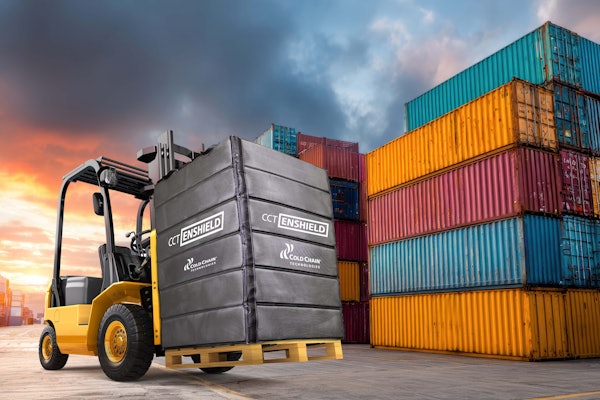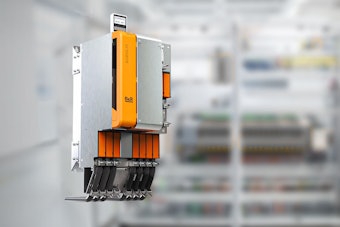• Regulatory matters. "Regardless of which FDA center (CDRH or CDER) has the lead responsibility, the medical device packager must comply with a whole new set of packaging requirements and testing," says Miller. "Is the container and closure system suitable for use with the drug?" he asks. "This addresses moisture gain or loss in the package, evaluating extractables and leachables from and to the package, providing full chemical composition of the materials via Drug Master Files (DMF), and a completely different set of product stability requirements. All these requirements may be found in CBER Guidance for Container Closure Systems for Packaging Human Drugs and Biologics, CDER Guidance for Stability Testing of Drug Substances and Drug Products, and USP 661," a characterization test on plastics.
• Sterilization. Miller says terminal (in-the-package) sterilization "will most certainly be affected" by combination products. "Aseptic processing is an alternative, but it's expensive. Some products may require a modified atmosphere [process], such as a gas flush or vacuum packaging. This equipment is not new but may be new to the combination-products packager."
He says, "Terminal sterilization is the preferred method. However, with the employment of large-molecule proteins, live cells, and drug chemistry on devices, nonstandard sterilization cycles may need to be considered." He says that "low-dose irradiation and low-temperature/low-EtO concentration processes may be the answer. However, in order to attain a sterility assurance level of 10(-6), very low bioburdens may be required. If so, this could significantly affect the way a product is manufactured, handled, and packaged."
• More packaging challenges. When it comes to packaging combination products, Miller says, "the biggest challenge is the package's ability to render the product (drug) safe and effective. Medical device packaging has the requirements to protect the product from damage, sterilize the product, and maintain sterility until time of use. Pharmaceutical packaging, on the other hand, has the main function to keep the drug safe and effective. [These require] two totally different mind frames and focuses. Medical device packagers need to understand the requirements of drug packaging," he says.
From a materials perspective, Miller believes "traditional materials most likely are acceptable. However, until they are
tested and evaluated in relation to the drug's safety and effectiveness, one cannot be sure. The package of choice for some products seems to be a foil pouch with a Tyvek header," he says, referring to the protective material from DuPont. This package style is typically employed for EtO terminal sterilization and has been used with body-absorbable products for some time. This assumes the product can be terminally EtO sterilized.
"For devices that require semirigid trays," he adds, "Aclar/PETG-thermoformed trays may be a choice for a moisture barrier, along with foil or barrier barrier film lidding." [Aclar is a specialty film from Honeywell.]
Miller notes, "Additional drug product packaging requirements involve batch-to-batch uniformity of materials to ensure product safety and efficacy. Typically, stability testing on three different batches of packaging materials is performed." [HCP]
• Sterilization. Miller says terminal (in-the-package) sterilization "will most certainly be affected" by combination products. "Aseptic processing is an alternative, but it's expensive. Some products may require a modified atmosphere [process], such as a gas flush or vacuum packaging. This equipment is not new but may be new to the combination-products packager."
He says, "Terminal sterilization is the preferred method. However, with the employment of large-molecule proteins, live cells, and drug chemistry on devices, nonstandard sterilization cycles may need to be considered." He says that "low-dose irradiation and low-temperature/low-EtO concentration processes may be the answer. However, in order to attain a sterility assurance level of 10(-6), very low bioburdens may be required. If so, this could significantly affect the way a product is manufactured, handled, and packaged."
• More packaging challenges. When it comes to packaging combination products, Miller says, "the biggest challenge is the package's ability to render the product (drug) safe and effective. Medical device packaging has the requirements to protect the product from damage, sterilize the product, and maintain sterility until time of use. Pharmaceutical packaging, on the other hand, has the main function to keep the drug safe and effective. [These require] two totally different mind frames and focuses. Medical device packagers need to understand the requirements of drug packaging," he says.
From a materials perspective, Miller believes "traditional materials most likely are acceptable. However, until they are
tested and evaluated in relation to the drug's safety and effectiveness, one cannot be sure. The package of choice for some products seems to be a foil pouch with a Tyvek header," he says, referring to the protective material from DuPont. This package style is typically employed for EtO terminal sterilization and has been used with body-absorbable products for some time. This assumes the product can be terminally EtO sterilized.
"For devices that require semirigid trays," he adds, "Aclar/PETG-thermoformed trays may be a choice for a moisture barrier, along with foil or barrier barrier film lidding." [Aclar is a specialty film from Honeywell.]
Miller notes, "Additional drug product packaging requirements involve batch-to-batch uniformity of materials to ensure product safety and efficacy. Typically, stability testing on three different batches of packaging materials is performed." [HCP]



















